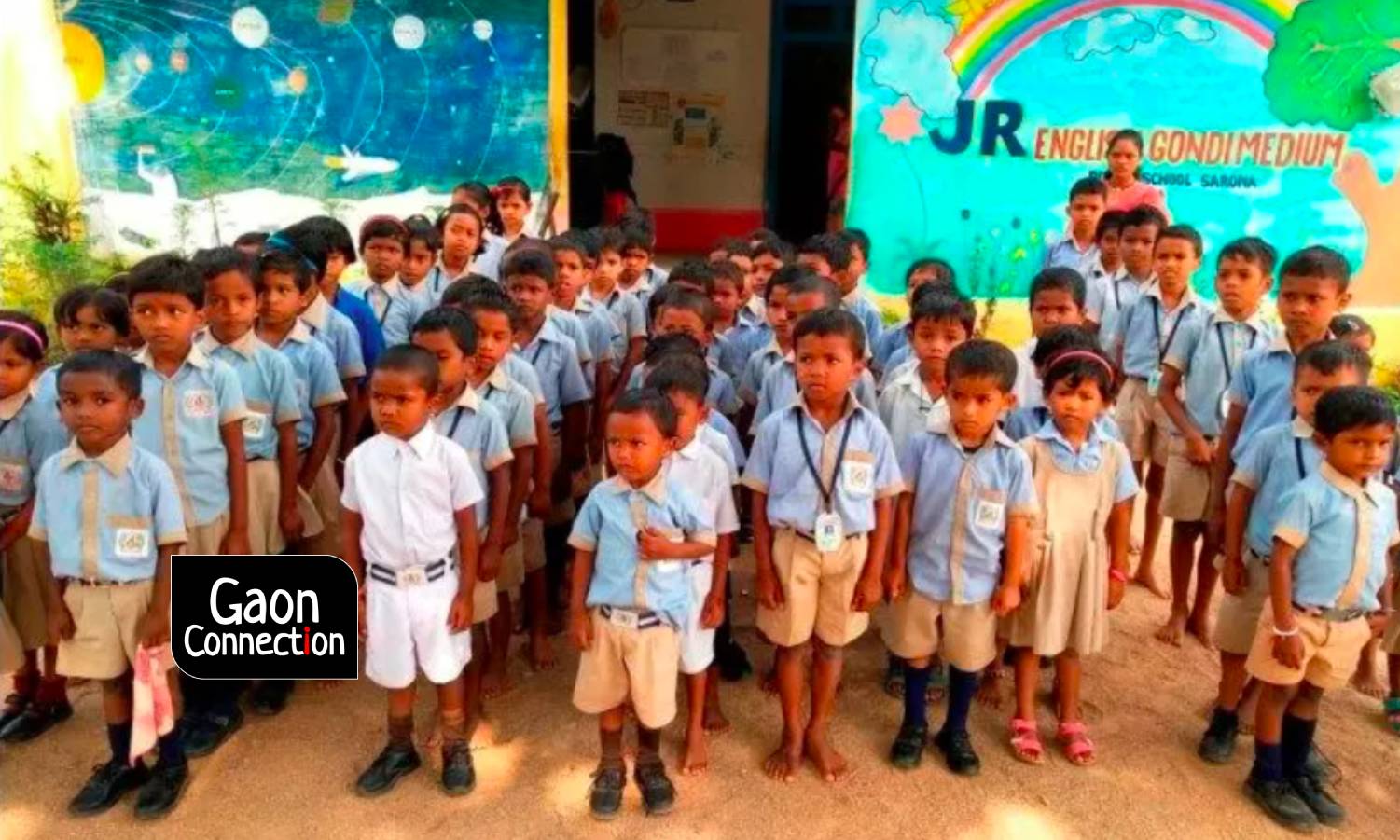Kanker, Chhattisgarh
India has about 11 crore indigenous people. Out of this, at least two crores use the Gondi language, across six states, colloquially. In Chhattisgarh’s Kanker and Kondagaon of Baster region, children of two schools will be taught in Gondi language using computers.
An education committee formed by people of the tribal community in Kanker district and a tribal activist worked together to create a font by digitising the Gondi script after a month’s tireless efforts. The font was to be launched on the occasion of World Tribal Day (International Day of the World’s Indigenous People) on August 9, 2020.
“At present, we are digitising the Gondi script in the ASCII Code. It will also be brought out in Unicode. We are currently operating three schools where it is necessary to have books in Gondi for effective teaching and learning,” Vipin Bhagat, a teacher digitising the font for Gondi script informed Gaon Connection. “This will prove to be a crucial milestone in the development of the Gondi language in times to come,” he added.
In Chhattisgarh, Gondi has been taught orally, without any printed text, for the past five years at Masora in Kondagaon district and Sarona, Pakhanjur of Kanker district. 300 children attend school here. These schools operate in community buildings and are run through public donations.
The initiative will promote school education in the Gondi language. The digital font of the Gondi script will also enable the government to print books in the language.
Earlier, certain retired as well as working people from the tribal community had formed an education committee – Jango Raitar – and founded three Gondi medium schools. These schools are being run by Jango Raitar Education Committee.
“We have begun an initiative for the propagation of the local language. Since school education did not use the local language as its medium, our children were unable to learn it,” said Vishnu Padda, the secretary of Jango Raitar Committee. “We used to provide oral lessons in Gondi to school children but were unable to take up the prescribed coursework due to the absence of a font for the language. So, the digitisation of Gondi will help our cause to a great extent,” he added.
Padda studied the Gondi script created by Acharya Motiravan Kangali, a scholar of Gondi language, in detail and published a primer in Gondi language in 2005. The same primer was being taught to the children in the three schools for the past five years.
“Today, each area in the country has its own native language and script, so the Gondi taken up by Vishnu Padda was used as a baseline to develop the font for the language,” said Kapoor Chand Kunjam, tribal social activist, told Gaon Connection.


















